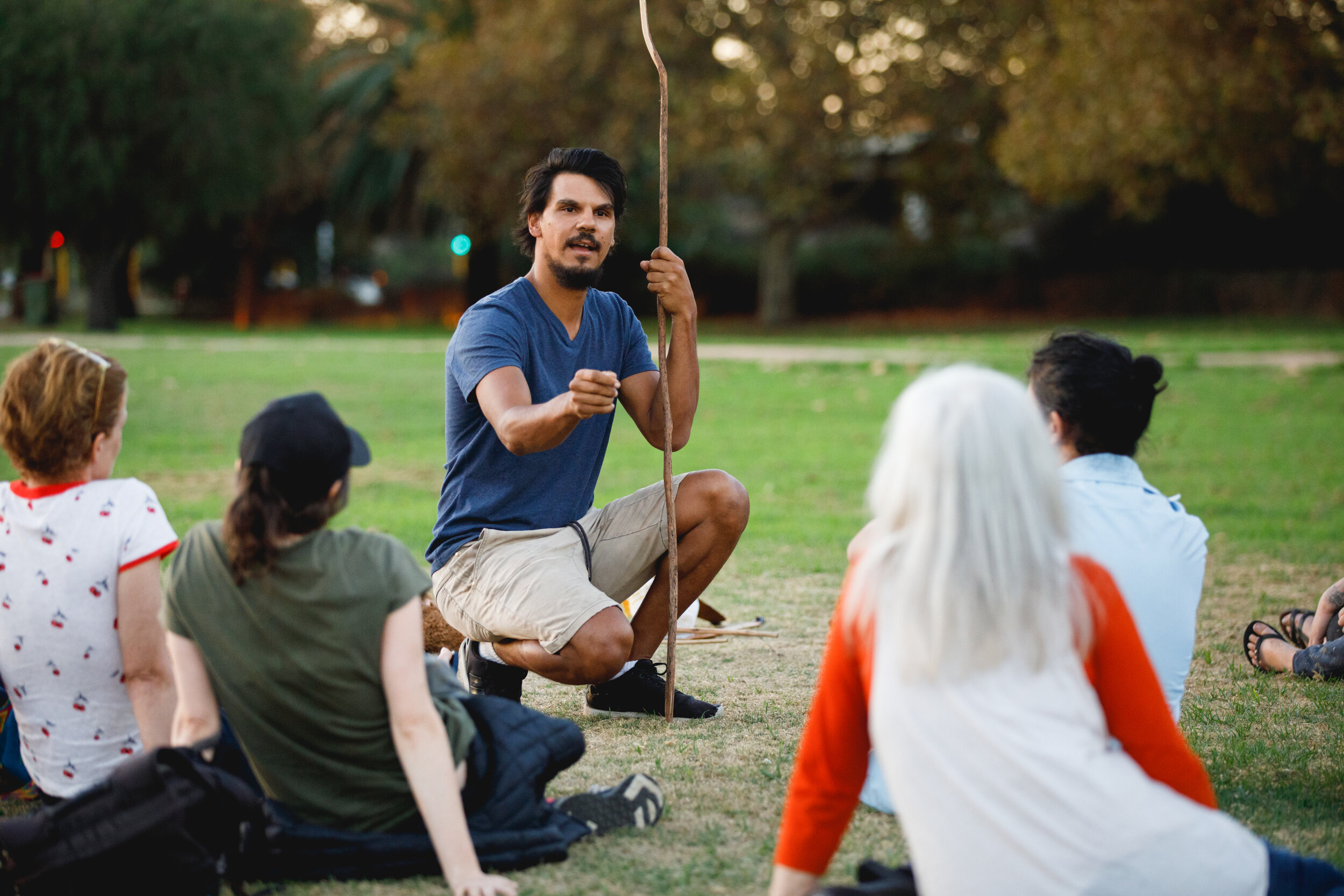
A Buried History
By Dr Chris Owen and Dr Clint Bracknell
2021
The Perth tourism landmark of Lake Monger is best known for its flocks of black swans, the emblem of Western Australia, and as an idyllic spot to picnic, jog or walk the dog.
Thousands of people visit the lake every week without understanding the special cultural significance of this idyllic nature reserve nestled between million-dollar houses and the busy Mitchell Freeway.
For tens of thousands of years up to 1829, Lake Monger was a traditional Noongar camping and meeting place known as Galup (Kaarlap) – a place of fires. Just 4km from the Perth CBD, Galup also is a site where traumatic violence and loss have occurred.
The untold stories of Galup - including the little-known history of a massacre of Noongar people by British soldiers at the lake in 1830 - are being recounted in a walking performance at the site where the events happened.
Created by Noongar theatre-maker Ian Wilkes and artist/filmmaker Poppy van Oorde-Grainger with an oral history from Noongar elder Doolann Leisha Eatts and guided by a team of supportive Noongar Elders, the performance Galup is presented as part of Perth Festival in February 2021.
Massacres of the traditional Aboriginal owners of Australia dot the continent. These were invariably the result of conflict over taking Aboriginal country, killing Aboriginal people and exploiting their resources.
Western Australia was no exception. The area of Perth, colonised by the British in 1829 as the Swan River Colony, has a confronting history of which many residents are unaware. Deep and continuing stories from Noongar people underpin Perth’s more recent settler-colonial written history and are a source of wisdom and strength to be celebrated in the interests of reconciliation.
In the age of national truth-telling, this story of Galup needs to be told.
For that long stretch of time before British colonisation, Galup was part of an extensive wetland system crucial to Noongar life. Galup’s 1830 frontier role as both the ‘capital’ where Noongar congregated and a contested site of British military intervention are recorded by Swan River colonists William Henry Mackie, Captain Frederick Irwin and Robert Menli Lyon.
But what exactly is the story from 1830?
Many Noongar elders speak about Noongar people being killed at the lake, as told to them in oral histories passed down through families. Official letters and an article in London’s Literary Gazette clearly establish that on 3 May 1830, British forces killed Noongar people at Galup. Captain Irwin’s letter to Governor James Stirling describes the objective of the attack he led as “impressing a salutary dread of our superiority and arms”.
However, there are inconsistencies in three historical sources in terms of the chain of events and the scale of the killings is telling. Irwin writes of shooting and taking down one man ‘who appeared to be the Chief’ and gravely injuring another in the jaw. William Henry Mackie’s letter to Colonial Secretary Peter Brown describes “more than one or two” killed (1830). The Literary Gazette in London reported that “there has been a battle royale between the settlers and the natives … seven of their number were killed’ (1830: 805). Although Irwin describes three Noongar he interviewed on 4 May 1830 intimating that “that some of their people were dead or wounded in the lagoon”, he did not find any bodies and concludes that there were no deaths. Noongar oral histories that families carry to the present day offer little to help quantify the death-count. However, their near-uniform insistence that “a lot of Noongar were killed there” – as Ian Wilkes’ father often told him – gives credence to the idea of a colonial cover-up.
As the leader of the attack on 3 May 1830, Irwin had reason to downplay the violence and the extent of the killing. Governor Stirling had proclaimed Noongar people as British subjects and therefore subject in law to the same protections as white subjects.
On the western frontier, the reality was different in practice. Around 1830-33, tensions were escalating over land usage. Noongar were being driven from the area of what is now Perth city and were forced to camp further out. This period of conflict also saw the Pinjarra Massacre of October 1834 – a much more well-recognised killing event.
In this period, the Noongar were effectively being illegally killed. Even in the earliest stages of the colony, the real number of killings was being edited out (or significantly reduced) in official correspondence. The Noongar people being a ‘different legal subject’ would be a legacy that would last for the next 100 years. Fabricating and minimising the numbers of Aboriginal people killed would become a resonant theme throughout Western Australian history. This culture of suppression was echoed across the continent and was later lamented as a “conspiracy of silence” by a 1927 a royal commission into the Forrest River massacre in the Kimberley.
The Galup performance evokes the traumatic events of 3 May 1830 but it also explores the many different ways that frontier relationships were played out at the lake.
Yagan is an enduring resistance figure of significant stature, but he also was a cultural ambassador, innovator and performer. Galypart was a Noongar from the smaller colonial outpost of King George Sound, later Albany. In 1833, Irwin was acting Governor and brought Galypart and a fellow countryman to Galup in the hope they would advise local Noongar of the Swan River Colony to interact more submissively with colonists.
At Galup, Galypart exchanged cloaks with Noongar leader Munday and took part in a spear throwing contest and corroboree with Yagan. He also attended a piano recital. These events are all portrayed in the Galup performance, which brings to life Noongar peoples’ wide range of experiences of colonisation and gives voice to long-denied whispers and echoes of the frontier.
This production tells a largely unknown story as an invitation to all Western Australians to learn more about our collective history and identity. It is a walk back into the past to help acknowledge and understand a way towards a reconciled future.
Reference list
Irwin, Frederick Chidley Correspondence, 1808-1844. State Records Office CSR ACC 36, Vol 6, Pg 146 ‘Letter from F.C. Irwin to Lieutenant Governor Stirling written 18th May 1830 about incident on 3 May 1830 at Monger’s Lake’ https://librarycatalogue.vincent.wa.gov.au/client/en_GB/search/asset/3405/0
‘Affray at Swan River’, The Literary Gazette and Journal of the Belles Lettres, 11 December 1830, p.805 https://books.google.com.au/books?id=AxwCRa2weagC&printsec=frontcover#v=onepage&q&f=false
Lyon, Robert Menli ‘A glance at manners’ continued [fourth instalment], Perth Gazette, 20 Apr 1833, p.62 https://trove.nla.gov.au/newspaper/article/642121/64
Mackie, William Henry, ‘Letter from W. H. Mackie to Col. Sec. P. Brown describing incident of 3 May between a group of Aborigines and white settlers’, 1830. State Records Office of Western Australia AU WA S1243- cons608 1. https://librarycatalogue.vincent.wa.gov.au/client/en_GB/search/asset/3422/0
